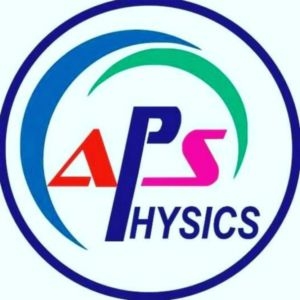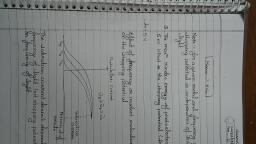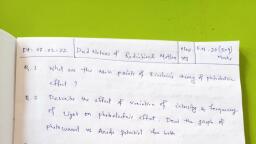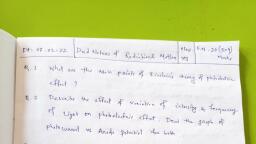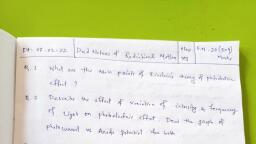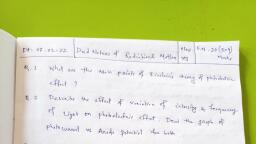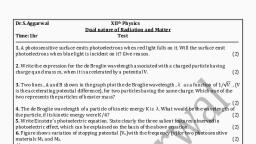Question 1 :
Bands in solids are formed due to a group of closely spaced ________ .
Question 4 :
<span>A general propose diode is more likely to suffer an avalanche breakdown rather than a Zener breakdown because:</span>
Question 6 :
The distinction between conductors, insulators and semiconductors is largely concerned with
Question 8 :
A semiconductor device is connected in a series circuit with a battery and a resistance. A current is found to pass through the circuit. If the polarity of the battery is reversed, the current drops to almost zero. The device may be a/an
Question 13 :
<span>What is the state of an ideal diode in the region of nonconduction ?</span>
Question 15 :
Which of the following has least band gap energy at $273K$.
Question 16 :
The level formed due to impurity atom,in the forbidden energy gap,very near to the valence band in a p-type semiconductor is called<br/>
Question 17 :
<span>Which one is the weakest type of bonding in solids ?</span>
Question 22 :
What does a high resistance reading in both forward- and reverse-bias directions indicate?
Question 24 :
In insulators (CB is conduction band and VB is valence band)
Question 25 :
The current through any p-n junction is due to<br/>a) drift of charge carriers.<br/>b) diffusion of charge carriers.<br/>c) different concentrations of same type of charge carriers in different regions.<br/>d) same concentrations of same type of charge carriers in different regions.<br/>
Question 30 :
<span>The level formed due to impurity atom, in the forbidden energy gap, very near to the valence band in a P-type semiconductor is called</span>
Question 33 :
Number of electrons in the valence shell of a semiconductor is
Question 35 :
What is the optimum band gap energy for a material to be considered as a semiconductor?
Question 36 :
What is the order of magnitude of the resistance of a dry human body?
Question 41 :
The minimum forward biased voltage required for a diode to conduct is called:
Question 43 :
The energy gap in case of which of the following is less than $3 eV$?
Question 44 :
The energy band gap (distance between the conduction band and valence band) in conductor is.<br>
Question 45 :
The energy gap between the valence band and the condition band for a material is $6$eV. The material is?
Question 52 :
Which one of the following property of light does not support wave theory of light
Question 54 :
According to Corpuscular theory, the color of the light is given by :<br/>
Question 58 :
Which group of scientists played a significant role in the development of quantum theory?
Question 61 :
<div><span>(A) : Newton's corpuscular theory of light could not explain refraction of light.</span><br/></div>(B) : Huygen's wave theory fails to explain polarization property of light.<br/>
Question 62 :
In Davisson-Germer experiment, electron gun is coated with oxide of _______ .
Question 64 :
<span>Electron microscope, the biggest innovation in microscopy was built on principle of</span>
Question 65 :
Einstein’s photoelectric equation states that<br/>$E_{k} = h v - W$, In this equation $E_k$ refers to :<br/>
Question 66 :
When a cathode ray tube is operated at 2912 volt, then velocity of electrons is $3.2\times 10^7 m/s$. The velocity of cathode ray, if the tube is operated at 5824 volt, will be :
Question 69 :
Albert Einstein got a nobel prize in physics for his work on:
Question 70 :
Photons of energy $1$eV and $2.5$eV successively illuminate a metal whose work function if $0.5$ eV. The ratio of maximum speed of emitted electrons is ________.
Question 72 :
Two light beams of equal energies consist of $n_1$ and $n_2$ photons. If their frequencies are $v_1$ and $v_2$ respectively, then the correct relation is
Question 73 :
The nature of light which is verified by the interference event is<br>
Question 76 :
Who first proposed that the light exhibits wave nature and explained wave phenomenon?
Question 77 :
If the operating potential of an X-ray is $50\ kV$, the velocity of X-rays coming out of it
Question 78 :
In Davisson-Germer experiment, the electron beam is made to fall on surface of _________ crystals.
Question 84 :
Wave theory cannot explain the phenomena of<br>A) Polarization <br>B) Diffraction<br>C) Compton effect <br>D) Photoelectric effect<br>
Question 85 :
If the wavelength is brought down from $6000 \mathring{A}$ to $4000 \mathring{A}$ in a photoelectric experiment, then what will happen ?
Question 86 :
Though quantum theroy of light can explain a number of phenomena observed with light, it is necessary to retain the wave-nature of light to explain the phenomena of:<br/>
Question 89 :
<span>A moving particle is associated with a wave packet or group of waves. The group velocity is equal to</span>
Question 90 :
Which phenomenon best supports the theory that matter has a wave nature?
Question 91 :
In case of theory of light nature of light match the following :<br/><table class="wysiwyg-table"><tbody><tr><td>List - I</td><td>List - II</td></tr><tr><td>a) Light is a collection of photons <br/></td><td>e) Newton's theory</td></tr><tr><td>b) Light is a form of electromagnetic wave</td><td>f) Huygen's theory</td></tr><tr><td>c) Light is a wave  </td><td>g) Maxwell's theory</td></tr><tr><td>d) Light is a stream of  <span>corpuscles</span></td><td>h) Max planck's theory              </td></tr></tbody></table>
Question 92 :
In Davisson-Germer experiment electrons were made to strike a sheet made of ______ metal.
Question 93 :
Stopping potential is the negative voltage on the collector plate at which the photoelectric current just becomes __________.
Question 95 :
According to the theory of relativity, all laws of nature are the same in reference frames that:
Question 96 :
The dual nature of wave states that all matter has properties of:<br/>
Question 97 :
If the ionization energy of hydrogen is 13.6 eV, then the ionization energy for${ He }^{ + }$ ion will be <div><br/></div><div><h1 class="sg-text sg-text--large sg-text--regular"><br/></h1></div>
Question 100 :
Photoelectric Effect and Raman Effect can be explained on the basis of:
Question 101 :
Cathode rays are passing through a discharge tube. In the tube, there is
Question 104 :
The conditions for the discharge of electricity in a discharge tube are :
Question 105 :
Name a device which is commonly used to convert an electric signal into a visual signal
Question 107 :
Which one of the following device makes use of the electrons to strike certain substances to produce fluorescence?
Question 108 :
In a vacuum diode, the space around the cathode which is filled with electrons, is called ________ .
Question 109 :
If the K.E. of a cathode ray beam is 8KeV, then the tube should work at a Potential Difference of<br/>
Question 110 :
In Bohr's atom the number of de Broglie's waves associated with an electron moving in $n^{th}$ permitted orbit is:-
Question 111 :
Why are matter waves significant only in the motion of extremely small particles?
Question 113 :
The lamp whose working is based on a discharge tube is ________ .
Question 114 :
In which of the following fields cathode rays show minimum deflection ?<br/>
Question 115 :
How can the brightness of the pattern on the screen or cathode ray tube be changed ?
Question 117 :
In electromagnetic spectrum, the frequencies of $\gamma$-rays, X-rays and ultraviolet rays are denoted by $n_1, n_2$ and $n_3$ respectively. Then<br/>
Question 118 :
Which one of the following properties is not found in cathode rays ?
Question 119 :
Name a device which is commonly used to convert an electric signal into a visual signal.
Question 120 :
<span>In a cathode ray tube, what is the effect on the beam of particles if </span>it passes through the electric field?
Question 122 :
State the approximate voltage V$_1$ used to heat the filament in a cathode ray tube.
Question 124 :
How will you relate velocity of cathode rays to c, i<span>f ‘c' denotes the velocity of light?</span><br/>
Question 126 :
<span>What change is noticed  in cathode ray tube when  the anode voltage is increased ?</span>
Question 127 :
The series corresponding to minimum wave length transition in H-atom is
Question 128 :
Cathode ray tube is operating at 5 kV. Then ,what is the K.E. acquired by the electrons ?<br/>
Question 129 :
The ratio of minimum wavelengths of Lyman and Balmer series will be<br>
Question 130 :
If the pressure within a discharge tube is reduced from ${10}^{-3} mm$ to ${10}^{-4} mm$ mercury then the rays which are produced perpendicular to the cathode surface are known as
Question 131 :
State the amount of charge on each particle in a cathode ray tube
Question 132 :
Why is the screen of the cathode ray tube coated ? Name the material used for coating.
Question 134 :
<span>What is the purpose of filament in electron gun inside a cathode ray tube?</span>
Question 135 :
The fluorescence of the glass (discharge) tube at very low pressure is characteristic of ________ .
Question 136 :
In a cathode ray oscillograph, the focusing of beam on the screen is achieved by
Question 137 :
Which of the following option is NOT a correct pairing of physicist and field in which he made significant contributions?
Question 141 :
A strong argument for particle nature of cathode rays is that they
Question 143 :
How many wave length of Kr$^{86}$ are there in 1 metre?<br>
Question 144 :
The de-Broglie wavelength of an electron in $4^{th}$ orbit is ________. ($r=$ radius of $1^{st}$ orbit)<br/>
Question 145 :
Which of the following particles cannot be deflected by magnetic field ?<br/>
Question 146 :
<span>What is the purpose of anode in a Cathode ray tube?</span>
Question 148 :
When the nucleus of a radioactive element emits an alpha particle, the atomic number is decreased by
Question 149 :
When a $\beta^-$ particle is emitted from a nucleus, the neutron-proton ratio:
Question 150 :
Find the value of $x$ in the following nuclear reaction.<br/>$_{7}{N}^{14}  +  _{2}{He}^{4}  \rightarrow  _{x}{O}^{17}  +  _{1}{H}^{1}$
Question 152 :
In the nuclear reaction pictured below, what is the missing nuclide?<br/>$_{1}^{2}H + 7^{14}N \rightarrow _{2}^{3}He +?$
Question 153 :
$N$ atoms of a radioactive element emit $n$ number $\alpha $- particle per second. Mean life of the elements <div>in second is :</div>
Question 155 :
Find $x$ in the following nuclear reaction.<div><br/>$_{12}{Mg}^{24} + _{2}{He}^{4}  \rightarrow  _{14}{Si}^{x} + _{0}{n}^{1}$</div>
Question 156 :
The stable nucleus that has a radius $1/3$ that $Os^{189}$ is
Question 157 :
Find $x$ in the following nuclear reaction.<div><br/>$_{2}{He}^{4} + _{13}{Al}^{27}  \rightarrow  _{x}{P}^{30} + _{0}{n}^{1}$</div>
Question 161 :
Bombardment of Beryllium by alpha particles resulted in the discovery of :<br/>
Question 162 :
A positron is emitted by radioactive nucleus of proton number $90$. The product nucleus will have proton number :<br/>
Question 164 :
When a radioactive substance is kept in a vessel, the atmosphere around it is rich with
Question 172 :
A nucleus with an excess of neutrons may decay with the emission of :<br/>
Question 173 :
For which of the following events will the resulting products have more mass than the mass of the stuff from which the products came?
Question 174 :
In ${\beta}^{+}$ decay process, the following changes take place inside the nucleus
